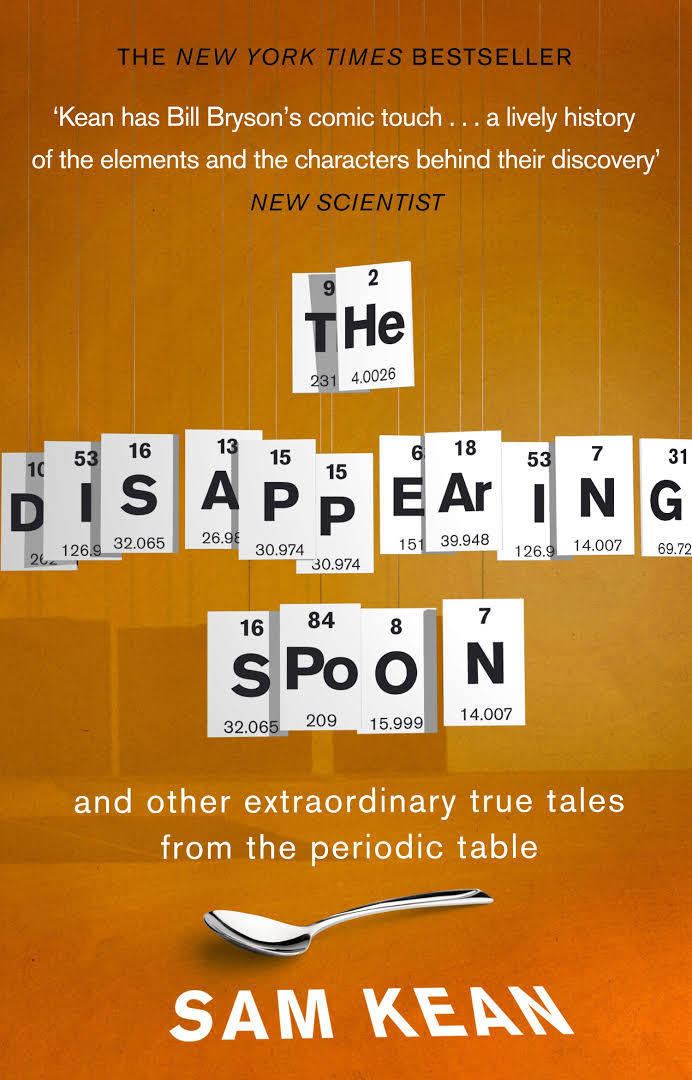8 /10 1 Votes
4.1/5 Barnes & Noble Pages 400 pages (hardback) Country United States of America | 3.9/5 Goodreads Language English Originally published 12 July 2010 ISBN 316051640 | |||||||||||||||||||||||||||||||||
 | ||||||||||||||||||||||||||||||||||
Publisher Little, Brown and Company Media type Print, e-book, audiobook Nominations Goodreads Choice Awards Best History & Biography Similar Sam Kean books, General chemistry books | ||||||||||||||||||||||||||||||||||
The disappearing spoon true tales of madness love and world history from the periodic table
The Disappearing Spoon, also known by its full title of The Disappearing Spoon: And Other True Tales of Madness, Love, and the History of the World from the Periodic Table of the Elements, is a 2010 book by science reporter Sam Kean. The book was first published in hardback on July 12, 2010 through Little, Brown and Company and was released in paperback on June 6, 2011 through Little, Brown and Company's imprint Back Bay Books.
Contents
- The disappearing spoon true tales of madness love and world history from the periodic table
- The disappearing spoon by sam kean
- Synopsis
- Reception
- References
The disappearing spoon by sam kean
Synopsis
The book focuses on the history of the periodic table by way of stories showing how each element affected the people who discovered the elements, for either good or bad. People discussed in the book includes those such as scientist Marie Curie, whose discovery of radium almost ruined her career, and the writer Mark Twain, whose short story “Sold to Satan” featured a devil who was made of radium and wore a suit made of polonium. Also discussed is Maria Goeppert-Mayer, a German-born American theoretical physicist who earned a Nobel Prize in Physics for her groundbreaking work, yet continually faced opposition due to her gender.
Reception
Critical reception to The Disappearing Spoon has been mostly positive. Science News and Smithsonian both praised the work for its wide appeal and writing, and Science News commented that Kean's choice to deal with topics by periods in history helped "reveal how truly elemental the elements are and explain why this chemistry book appeals to nonchemists." The New York Times was slightly more critical in their review, as they felt that the text was entertaining but leapt around too frequently in its topics.
